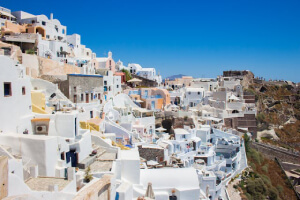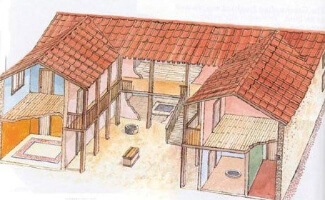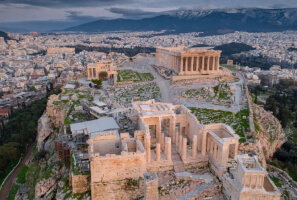Are Ancient Greek Methods the Best for Sustainable Buildings?
As we grapple with the obvious and painful effects of climate change, our focus has turned to more sustainable ways of doing things, be it making clothes, growing crops, or even rearing animals. It thus comes as no surprise that people in the construction industry have been looking into sustainable architecture, the kind where buildings have minimal negative impacts on the environment. Luckily for them, there is no need to come up with new methods because the Greeks already perfected sustainable architecture centuries ago. As such, architects are leaning on these tried and tested approaches and reaping huge benefits from them. We cover what these methods are and how they are playing a role in protecting our environment for future generations.
What Greek Building Elements are Sustainable?
When it comes to sustainable architecture, the goal is not just to protect the environment but also to create spaces that are safe and healthy for their end users. So, what methods did the Greeks use to hit all these targets?

They Followed the Sun's Path
Back in the day, Greek architects would design their houses such that they faced the south. In fact, they would often design entire cities with this orientation. The thinking here was that when it was winter, the houses could capture some of the sun, which helped keep the houses warm and provided light - they would also use open courtyards as a way to light up the inner rooms. And when it was summer, the roof overhangs and porticoes would block the sun's rays, thus keeping the buildings cool. Even without the complex HVAC systems that we have today, they managed to have pleasant living environments throughout the seasons.
In the present day, architects have jumped on this design. You will find that many of them are using the same principles. The windows, walls, and overhangs are placed in a way that keeps the houses cool in the summer and warm in the winter. As a result, people need to use their HVAC systems less, which contributes to less energy usage. Not only is that great for people's pockets, but also for the environment as this results in fewer carbon emissions.

They Used What Was Available
If you look at buildings in ancient Greece, you will notice a common theme - the builders used what was in their location. If they had marble, that's what went on their walls. If they had clay, then that is what they used. So effective were they in using what they had that they perfected the dry stone masonry, where they would fit large stones together without mortar! As a result, they used fewer resources to make and transport raw materials, and yet their buildings had solid structures.
The same concept has become commonplace in many countries today, where builders are now sourcing materials that are easily available in their local economies. So, people are moving materials across shorter distances and making do with what they have. Interestingly, there has also been an increase in the use of natural materials, such as stone and wood. While we have quite a distance to cover with this concept, it has reared its head enough to inspire more energy-efficient building approaches.

They Relied on Natural Ventilation
Let's go back to the 5th century BC. Back then, there was no electricity. But somehow, people needed access to fresh air and cool temperatures. So, what did ancient Greeks do? They relied on design principles. First, they built thick walls that absorbed heat during the day and released it at night, thus creating a balance that kept the houses cool. Secondly, they created open spaces within the homes. The hot air in these spaces would rise and escape, leaving a vacuum, which would then result in the pulling of cool air into the living areas. It was all about physics.
We are seeing the same principles in effect in modern buildings. We have the thick walls featuring concrete, stone, and other materials - these are ideal for natural temperature regulation. And we are also seeing more courtyards and open spaces in buildings, which are naturally regulating the temperatures, all without the need for HVAC systems.

They Built into Their Environments
Ancient Greeks did not see the environment as a hindrance. If anything, it was part of the building. Take the Acropolis as an example. It was built into a hill, which was a technique that the Greeks often used to insulate buildings from extreme temperatures. But it wasn't always about function. They also used their surroundings for aesthetics. Take the example of the monasteries, which were built into the mountains. They allowed the monks to enjoy remote spaces where they could worship. And as a plus, they offered them beautiful views of the natural landscapes around them.
Has this reflected in the way we build? Yes. For years, people would cut down vegetation or flatten the grounds before building. But now, they are building into the environment where they can connect with nature. Green roofs and living walls are one way to do it. And another is to just build on or around the existing nature.
